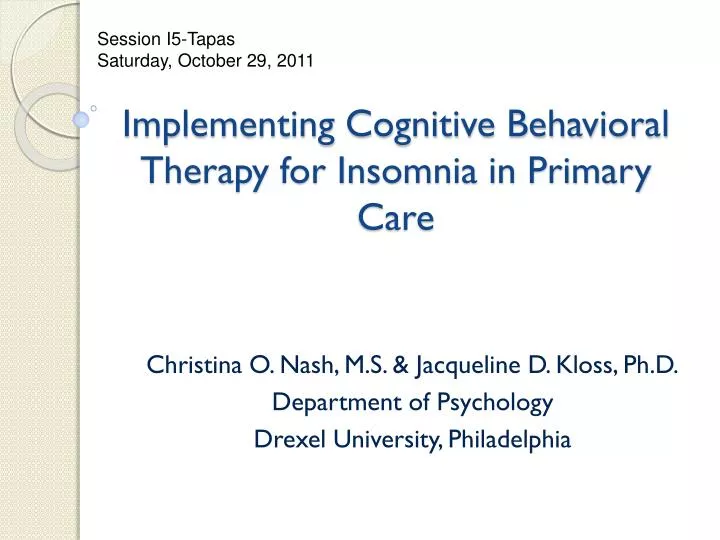

A therapist can provide tailored strategies and support to help you manage panic attacks effectively. Cognitive-behavioral therapy (CBT) is an evidence-based approach that helps individuals identify and change thought patterns and behaviors associated with panic attacks.
#Cognitive behavioral therapy for insomnia south georia professional#
If panic attacks persist and significantly impact your daily life, consider seeking professional help. Get enough sleep, maintain a balanced diet, and limit caffeine and alcohol intake, as they can exacerbate anxiety symptoms. Engage in activities that promote relaxation, such as practicing yoga, meditation, or engaging in hobbies that bring you joy. Prioritize self-care to manage anxiety and reduce the frequency of panic attacks. Informing someone about your condition and having a plan in place can provide reassurance and help you feel less alone in public spaces. Engage in activities that require concentration, such as solving a puzzle or reciting a poem, to divert your attention and calm your mind.ĭon't hesitate to reach out to a trusted friend, family member, or mental health professional who can offer support during panic attacks.

Carry a small object in your pocket, such as a stress ball or a smooth stone, that you can hold and squeeze during a panic attack. Redirecting your focus to something positive can help interrupt the panic cycle. This technique helps reduce muscle tension and promotes a sense of relaxation. Start with your toes and gradually work your way up, tensing each muscle group for a few seconds before releasing. Progressive muscle relaxation involves tensing and relaxing different muscle groups to release tension and promote relaxation. Examples include "I am safe," "This will pass," and "I am strong and capable." Repeat these affirmations silently or aloud to counteract negative thoughts and instill a sense of control and calm. Prepare a list of positive affirmations or calming statements that resonate with you. This exercise helps shift your focus away from the panic and into your immediate surroundings. Engage your senses by identifying and naming five things you can see, four things you can touch, three things you can hear, two things you can smell, and one thing you can taste. Grounding techniques help anchor your mind and body in the present moment, diverting attention from the panic attack. This technique helps regulate your breathing and sends signals to your body that you are safe, reducing the intensity of the panic attack. Focus on slow, deep breaths, inhaling through your nose and exhaling through your mouth. Recognizing these signs can help you distinguish between a panic attack and other medical conditions, alleviating unnecessary worry.ĭeep breathing exercises are a powerful tool to combat panic attacks. Common physical symptoms include rapid heartbeat, chest tightness, sweating, dizziness, and difficulty breathing. Understanding the signs of an impending panic attack can empower you to take proactive steps. In this expert guide, we will explore techniques to regain control and find calm during these challenging moments. However, it's important to remember that you are not alone, and there are effective strategies to help you manage panic attacks in public. The sudden surge of intense fear, rapid heartbeat, shortness of breath, and a sense of impending doom can make you feel like you've lost control. Experiencing a panic attack can be a distressing and overwhelming experience, especially when it happens in a public place.


 0 kommentar(er)
0 kommentar(er)
